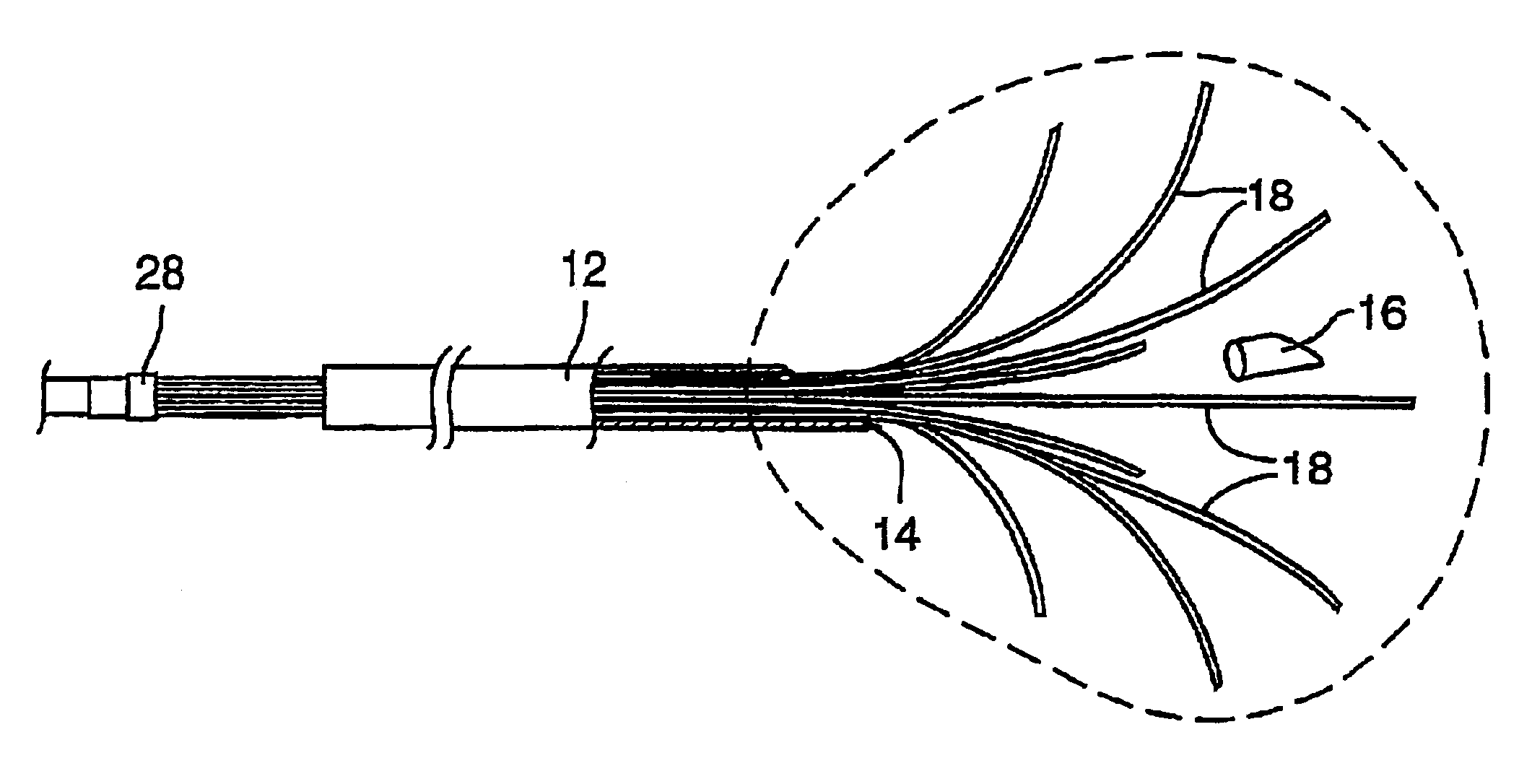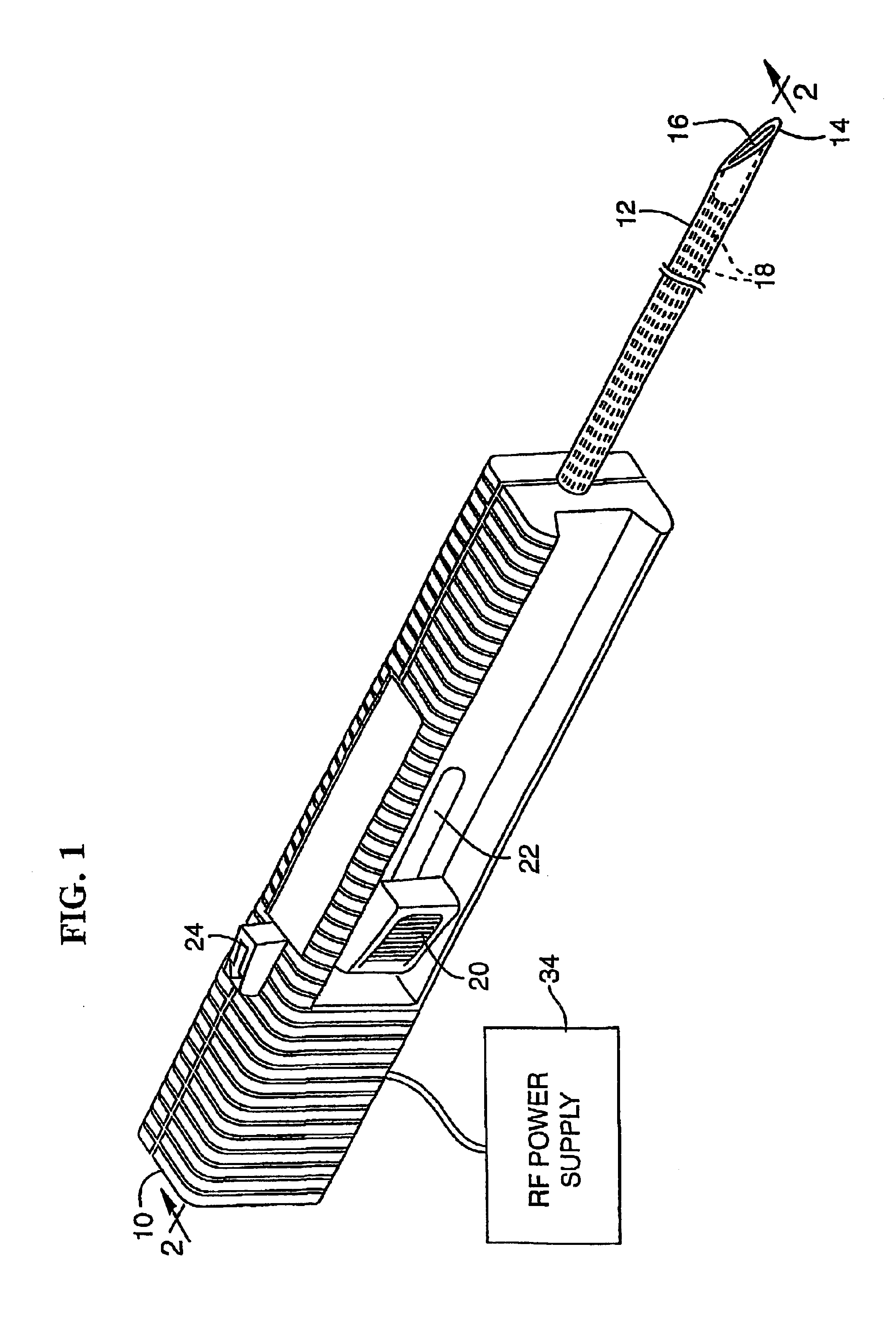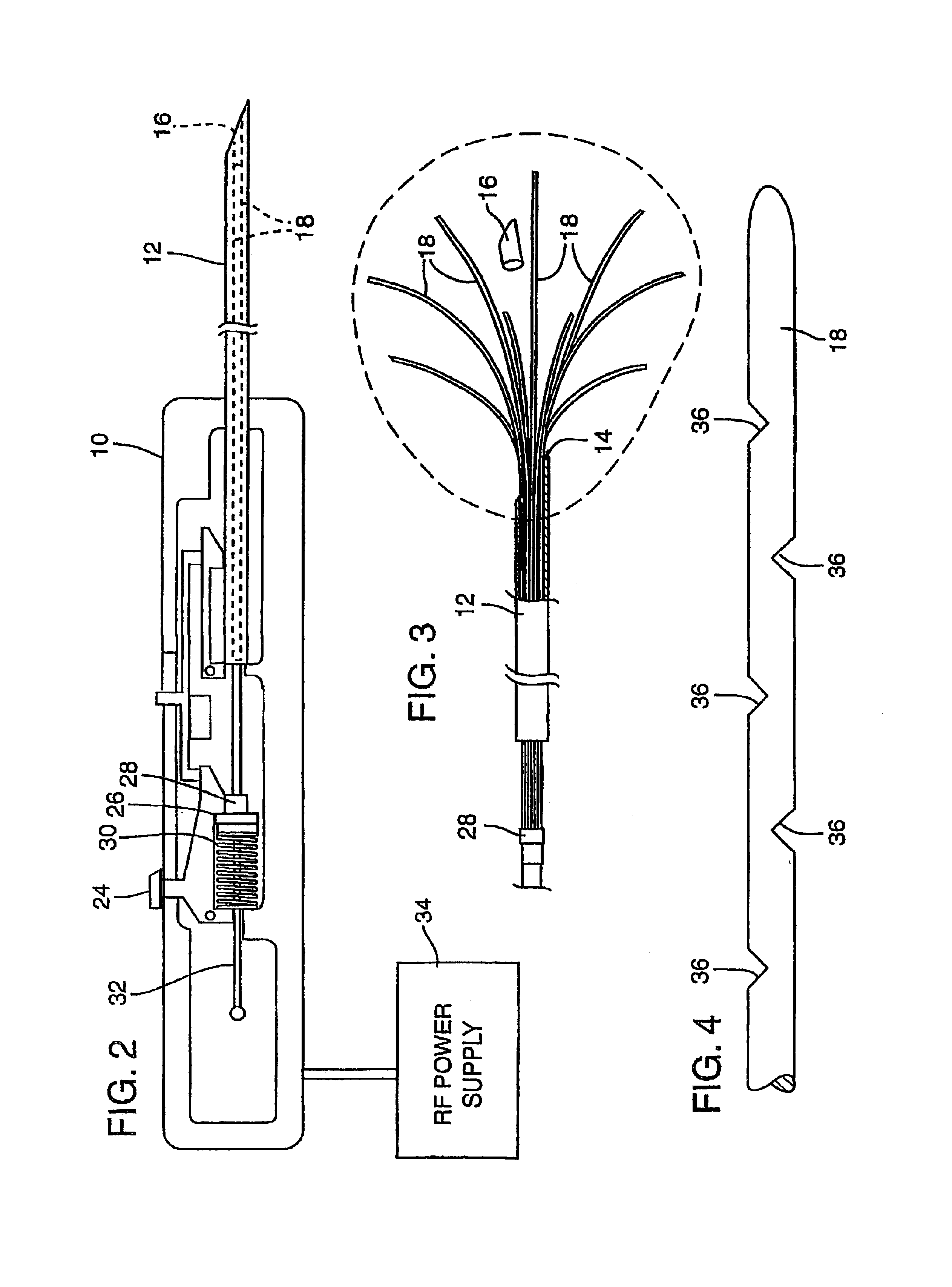Radiofrequency probes for tissue treatment and methods of use
a radiofrequency probe and tissue technology, applied in the field of radiofrequency probes for tissue ablation, can solve the problems of significant risk of tissue or vascular injury during placement of rf electrodes, emergency surgical procedures, and the utility of rf electrodes, and achieve the effect of inadequacies in the treatment of targets
- Summary
- Abstract
- Description
- Claims
- Application Information
AI Technical Summary
Benefits of technology
Problems solved by technology
Method used
Image
Examples
Embodiment Construction
[0017]As used herein, proximal refers to a portion of an instrument close to an operator, while distal refers to a portion of the instrument farther away from the operator. As used herein and in the claims, the singular forms “a”, “an”, and “the” include plural referents unless the context clearly dictates otherwise.
[0018]Referring now to the drawings, FIG. 1 illustrates one embodiment of the RF tissue ablation device of the present invention, in the device's nondeployed state. The embodiment consists of a housing 10 and an introducer 12 which protrudes from the distal end of the housing. Introducer 12 is substantially hollow and has a proximal end and a distal end 14. Distal end 14 may be tapered or beveled to a point to enable percutaneous entry of the introducer into the target tissue. Adjacent to distal end 14, and substantially occluding distal end 14, is an occluder 16. The occluder may be a plug, which may be made of any material, especially biocompatible material such as pec...
PUM
 Login to View More
Login to View More Abstract
Description
Claims
Application Information
 Login to View More
Login to View More - R&D
- Intellectual Property
- Life Sciences
- Materials
- Tech Scout
- Unparalleled Data Quality
- Higher Quality Content
- 60% Fewer Hallucinations
Browse by: Latest US Patents, China's latest patents, Technical Efficacy Thesaurus, Application Domain, Technology Topic, Popular Technical Reports.
© 2025 PatSnap. All rights reserved.Legal|Privacy policy|Modern Slavery Act Transparency Statement|Sitemap|About US| Contact US: help@patsnap.com



